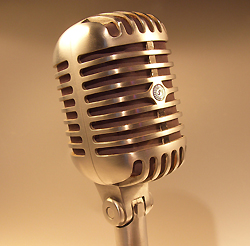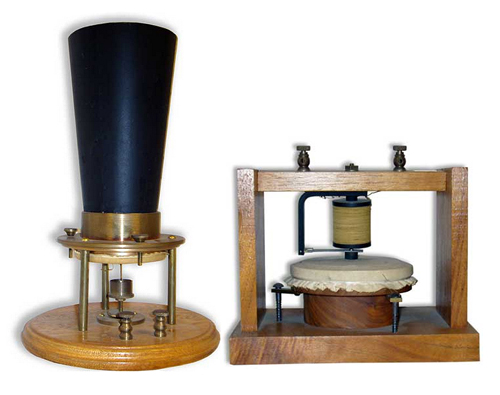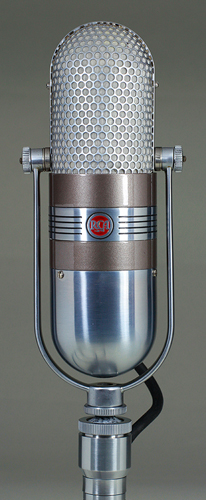Microphones as we know them date back to about the mid-1800s, when many different inventors were trying to electronically transmit sounds from one place to another.
Before then, the term microphone was used to describe an acoustical device (like an ear trumpet or stethoscope) that helped amplify sounds.
One of those inventors was German physicist Johann Philipp Reis (1834-1874), who designed a sound transmitter consisting of a metallic strip resting on a membrane with a metal point contact that would complete the electrical circuit when sound waves moved the membrane (a.k.a., diaphragm).
A bit later, American Elisha Gray, an inventor and one of the founders of Western Electric, formulated a liquid transmitter that immersed a rod connected to a diaphragm into an acid solution. A second fixed rod was also immersed in the liquid, and a battery connected the two rods. As the sound waves moved the first rod, the distance between it and the second rod varied in proportion to the sound, producing corresponding changes in the electrical resistance flowing through the cell.
While Gray may have actually invented the liquid microphone first, history recognizes Alexander Graham Bell as the inventor of the telephone because he filed for a patent a few hours before Gray.
As children, we were told the story of Bell accidentally spilling some acid and calling for his assistant, saying “Watson, come here, I need you.” Watson heard Bell’s voice over the system, and it’s noted as the first “phone call.” Other inventors who contributed significantly to early microphone technology include Emile Berliner, David Edward Hughes and Thomas Edison.
As a self-confessed “mic geek,” I find the history of these devices fascinating, and thought it would be interesting to share some of the highlights of mic development. Note that this is by no means intended to be comprehensive, but focuses on what I see as many of the notable design breakthroughs through the years.

Early Pioneers
By the late 1920s, Western Electric developed the first practical dynamic microphone, the 618A, which became a very popular with broadcasters. According to the company’s instructions for use, the 618A sported a “thin duralumin diaphragm of low mechanical stiffness” and a magnet made from “high-grade cobalt steel.”
The document goes on to state that “a number of air chambers and slot openings connecting them have been associated with the diaphragm in order to obtain substantially uniform response over a frequency range from 35 to 9,500 cycles per second.
One of these acoustic elements, in addition to exerting a control on the motion of the diaphragm, allows air to be transferred from the front to the back of the diaphragm. This eliminates effects due to changes in barometric pressure.”
beyerdynamic was founded in Germany in the mid-1920s, initially developing loudspeakers for the motion picture industry. By 1939 the country introduced its first dynamic microphone for studio use, the M19, which also became a favorite of broadcasters.
Neumann unveiled the CMV3 in 1927, arguably the first commercially available condenser mic for broadcast. Later, the U47—although perhaps not the first multi-pattern condenser—was certainly a marquee product, becoming a standard in the 1950s and by 1960 largely replaced the ribbon mics used for recording.
Meanwhile, in 1932, RCA introduced the massive 77A. Designed by Dr. Harry F. Olson, it featured two vertical in-line ribbons and an acoustic labyrinth inside the case which enabled it to be unidirectional.
According to the manual, “The figure 8 pattern of the velocity-actuated part of the ribbon combines with the circular pattern of the pressure-actuated half to provide an overall cardioid pattern.” The 77A was no handheld model at 11.5 x 3.75 inches and weighing in at 4.5 pounds, it used a 1/2-inch pipe thread for mounting.






















